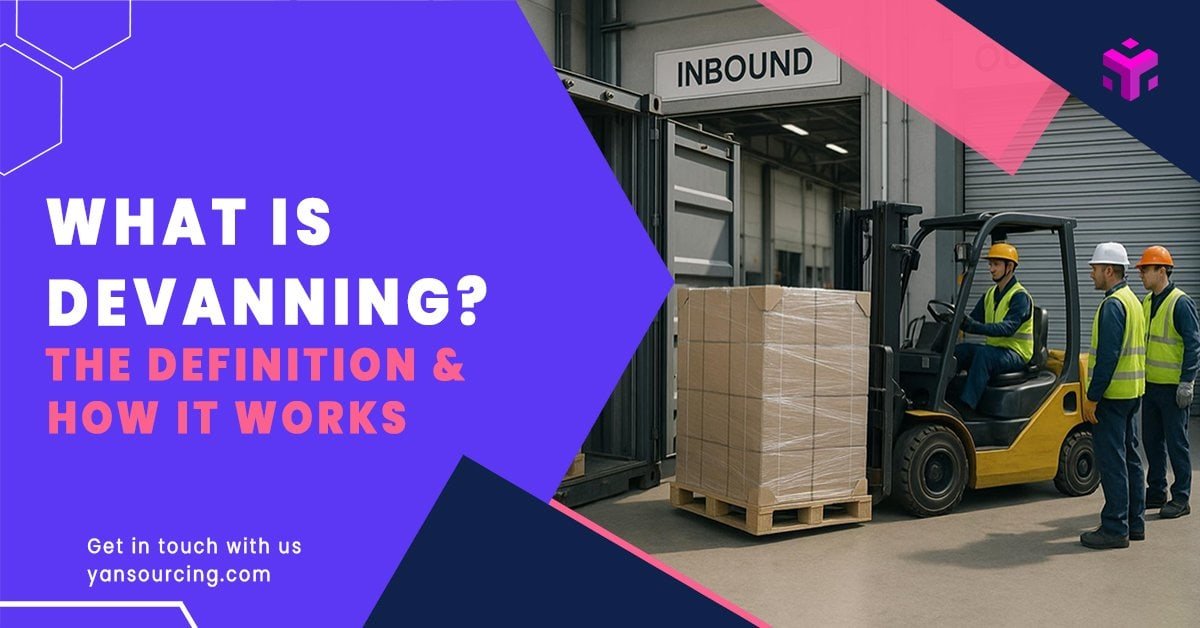
Devanning is the physical unloading of cargo from a shipping container, then staging it for storage, inspection, or onward distribution.
If a container is the travel crate for your inventory, devanning is the moment you open it—safely, systematically, and in compliance with where the goods are headed. Trade references describe it as a defined warehouse/CFS process using equipment like forklifts and documented steps, as outlined by the industry publication Inbound Logistics – devanning overview (2022).
You might also hear devanning called destuffing, unstuffing, or container stripping. For e‑commerce brands, this step is a profit lever: it’s the critical breakpoint where international freight turns into sellable inventory. Done right, you avoid damage, delays, and platform refusals; done poorly, you risk detention/demurrage fees, FBA chargebacks, and lost sales windows.
Terminology at a glance
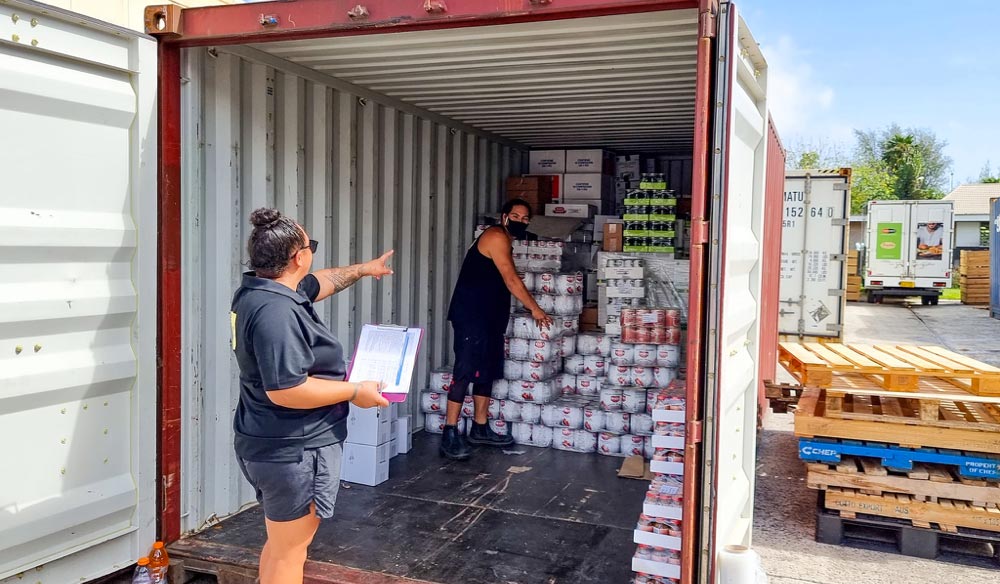
- Devanning (aka destuffing/stripping): The physical act of unloading a container.
- Deconsolidation: A commercial/logistics allocation step that splits consolidated freight by consignee or destination; it may happen alongside or right after devanning, but it is not the same action.
- Cross-docking: A flow design where goods move from inbound to outbound with minimal or no storage; devanning can be one step within a cross-dock workflow, but cross-docking is broader than the unload itself.
Where devanning happens—and how to choose
Picking the right location aligns your priorities across cost, speed, and compliance.
Origin (China consolidation warehouse)
- Best when: You need labeling, kitting, or bundle prep before export; you’re consolidating multiple SKUs; you want the lowest overall handling cost.
- Watchouts: Extra handling time at origin. Confirm packaging survives ocean transit after any rework.
Port/CFS (near the terminal after customs release)
- Best when: You’re a larger importer or have tight post-clearance timelines; you want to reduce inland drayage before sorting and distributing.
- Watchouts: Terminal free time is ticking; delays raise demurrage risk if cargo isn’t moved out promptly.
Destination 3PL (near FBA or final mile)
- Best when: You must nail platform compliance (FBA pallet specs/labels), barcode checks, or repacking; you have tight receiving appointments.
- Watchouts: Potentially higher handling cost than origin, but often offset by faster acceptance and fewer refusals.
Simple rule of thumb: choose origin for cost and pre-labeling; choose destination for speed-to-shelf and compliance assurance; choose port/CFS when timing from customs release is paramount.
Step-by-step checklists: before, during, after devanning
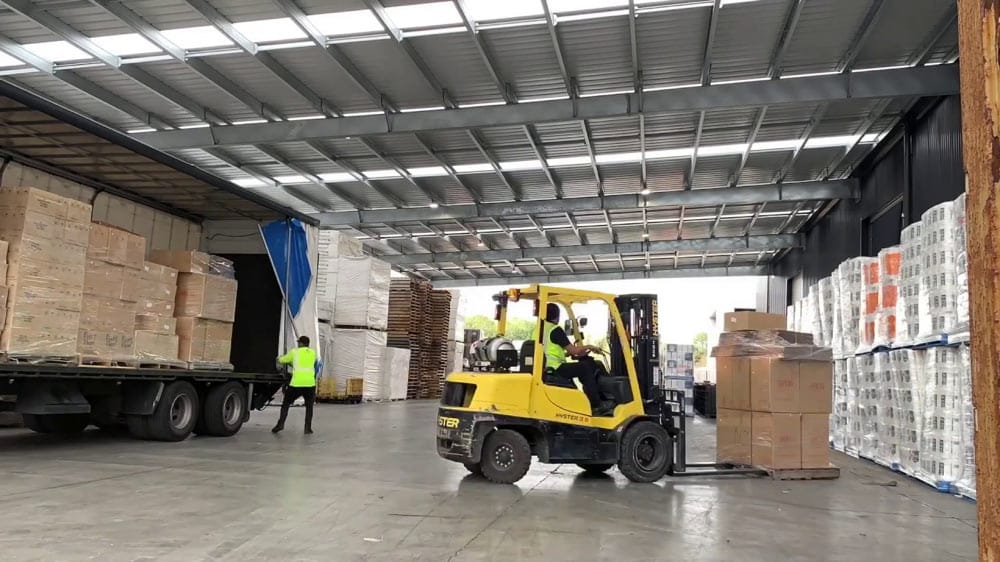
Use these SOP-style lists to reduce damage, discrepancies, and refusals.
Before devanning
- Confirm customs release, drayage schedule, and receiving appointment at the 3PL or FC.
- Prepare your SOP: crew, PPE, forklift/pallet jack, dock door, lighting, and safety plan.
- Stage materials: ISPM‑15 pallets if repalletizing for any international legs, corner protectors, stretch/shrink wrap, labels, and dunnage.
- Set your QC plan: AQL levels, sample sizes, defect classifications, and photo/video documentation steps.
- Verify documents: BOL, packing list, SKU map, and any ASN/Send to Amazon details.
During devanning
- Photograph seal removal and the container interior upon first door open; note any shifting or wet/damaged cartons.
- Unload row by row; segregate by SKU; avoid cutting stretch wrap that keeps tiers stable unless necessary.
- Execute AQL sampling on selected SKUs; record defects with close-up photos and lot references.
- Check barcode visibility on units/cartons; ensure labels are scannable and not covered by wrap.
- Palletize to the target spec: consistent layers, corner protection, tight wrap, and pallet labels applied on the outside.
After devanning
- Complete carton and SKU reconciliation; issue a discrepancy report noting overages/shortages/damage.
- Archive evidence: photo/video set, barcode scan logs, and signed delivery notes.
- Book onward transport; confirm delivery appointment windows for the FC or final-mile carrier.
- If damage is discovered, collect claim documentation immediately (photos, counts, and notations on receipts where appropriate).
Integrated QC during devanning (AQL, evidence, reconciliation)
Devanning is an ideal moment to combine receiving with quality control:
- AQL sampling: Use a standard sampling approach (e.g., ANSI/ASQ Z1.4 or ISO 2859-1) with agreed AQLs for critical/major/minor defects. This lets you accept or escalate lots based on objective counts.
- Photo/video package: Capture container seal, interior condition, load bracing, first pallets out, any damaged cartons, and defect examples.
- Barcode and count logs: Scan a sample of unit barcodes to validate scannability and SKU mapping; reconcile carton counts against the packing list.
- Discrepancy report: Summarize shortages/overages/damage, attach media, and share immediately with suppliers and carriers as needed.
FBA compliance essentials at devanning
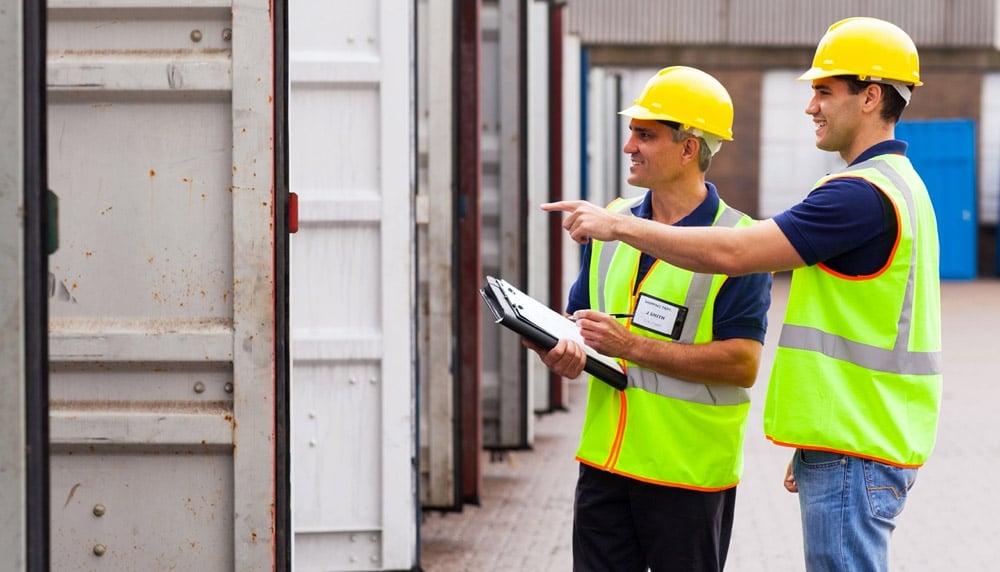
Amazon’s requirements change over time; always confirm active rules inside Seller Central at shipment creation. As of 2025-09-26, key areas to check include:
- Palletized deliveries (LTL/FTL/FCL): Review pallet standards, labeling, and documentation in Amazon Seller Central – Seller requirements for LTL, FTL, and FCL deliveries. Apply four pallet labels (top center of each side where specified), avoid over-height/overweight pallets, and align with FC appointment rules.
- Unit and carton packaging/labels: Ensure FNSKU/UPC/EAN barcodes are present and scannable; place labels where they are not obscured by wrap. See Amazon Seller Central – Product packaging requirements.
- Barcode visibility in practice: When wrapping pallets, place pallet labels on the outside of the wrap and confirm unit/carton barcodes can be scanned once unwrapped at receiving.
- Appointment discipline: Use the Send to Amazon workflow to provide shipment details and align delivery appointments as required for your target FC and carrier.
Risk controls: demurrage vs detention (and how to avoid both)
Two similar-sounding fees can quietly erode your margin:
- Demurrage: Charges when containers/cargo sit at the terminal beyond the free time.
- Detention: Charges when you hold containers outside the terminal beyond the free time. The U.S. maritime regulator details both concepts and current billing rules on the Federal Maritime Commission – Detention and Demurrage page (with a final rule effective in 2024 improving invoice standards and dispute windows).
How to avoid them:
- Book devanning promptly and align drayage so you clear the terminal within free time.
- Confirm customs release status before dispatching trucks.
- Pre‑schedule receiving appointments or cross-dock transfers to avoid dwell.
- Keep documentation tight: BOL, packing list, and any required references ready for terminal and warehouse.
Practical example: turning a risky delay into inventory
A West Coast FBA seller’s container arrived just as free time was expiring. We coordinated destination devanning at a nearby 3PL, performed FBA pallet prep and labeling, and booked an immediate appointment into the FC—helping the brand avoid several thousand dollars in potential fees and hit a key sales window.
First mention of services: Yansourcing can coordinate this end-to-end—origin prep, compliance checks at devanning, and inbound scheduling—so you convert containers into sellable inventory faster. Disclosure: Yansourcing is our product.
Common mistakes—and the quick fixes
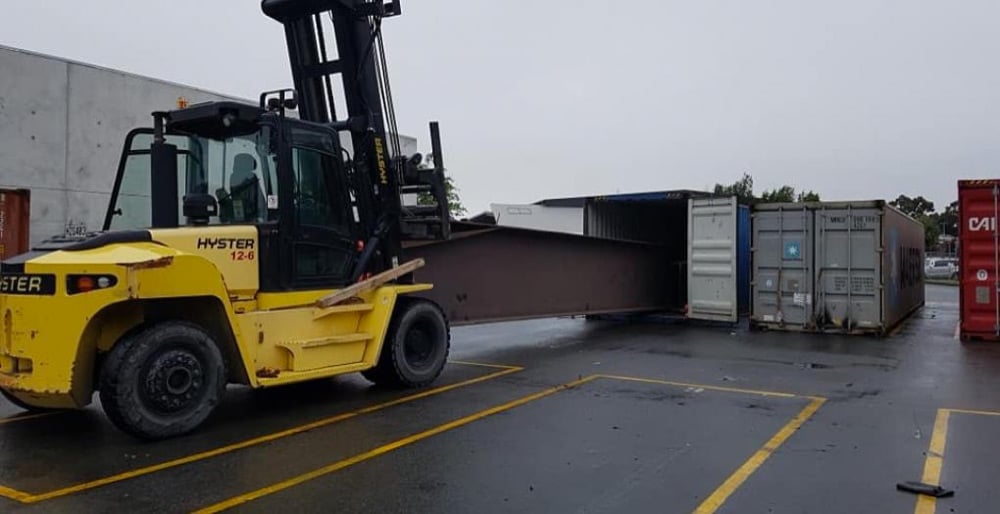
Over‑height or overweight pallets for FBA
- Fix: Verify pallet rules for your FC and shipment type in Seller Central before palletizing; re‑tier stacks and apply corner protection to improve stability.
Barcodes covered by shrink wrap or placed on curved surfaces
- Fix: Apply labels on a flat face; keep unit and carton barcodes scannable; place pallet labels on the outside of wrap.
Non‑compliant wooden pallets for cross‑border legs
- Fix: Use ISPM‑15 compliant pallets and check for legible marks (IPPC logo, country code, producer, treatment code). See IPPC/FAO – ISPM 15 wood packaging guide (2023).
Missing or weak evidence for claims
- Fix: Photograph seal, container interior, and first-out pallets; maintain discrepancy reports and barcode scan logs; note damages on delivery receipts when appropriate.
Letting free time slip at the terminal
- Fix: Pair customs clearance, drayage, and devanning bookings so cargo moves out within free time; monitor status daily until out-gated.
Quick decision aid: where should you devan this shipment?
- Choose origin (China) if: You need heavy relabeling/kitting, want to minimize handling cost, and can absorb the extra day or two for prep.
- Choose port/CFS if: You must move quickly post‑clearance and can transfer to nearby facilities for sorting before inland haul.
- Choose destination 3PL if: FBA compliance is priority one; you need barcode checks, repacking, or certainty around appointments into FCs.
Final notes and next steps
- Always verify Amazon inbound requirements in Seller Central at shipment creation; facilities and rules can vary by region and over time.
- Standardize your devanning SOP with checklists, photo protocols, and discrepancy reports. This is where cost, speed, and compliance converge into profit.
- If you want experienced coordination from origin to FBA receiving, book a short consultation with Yansourcing’s team. We can also share a practical Devanning/FBA Inbound Checklist you can adapt to your operation.
